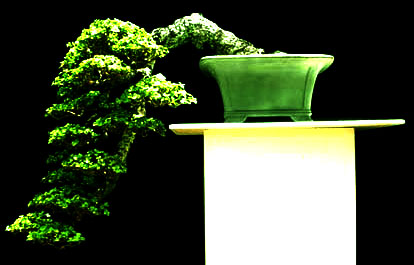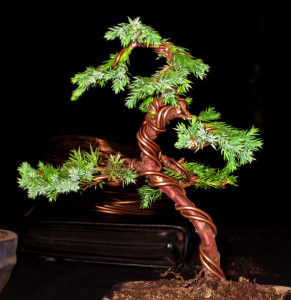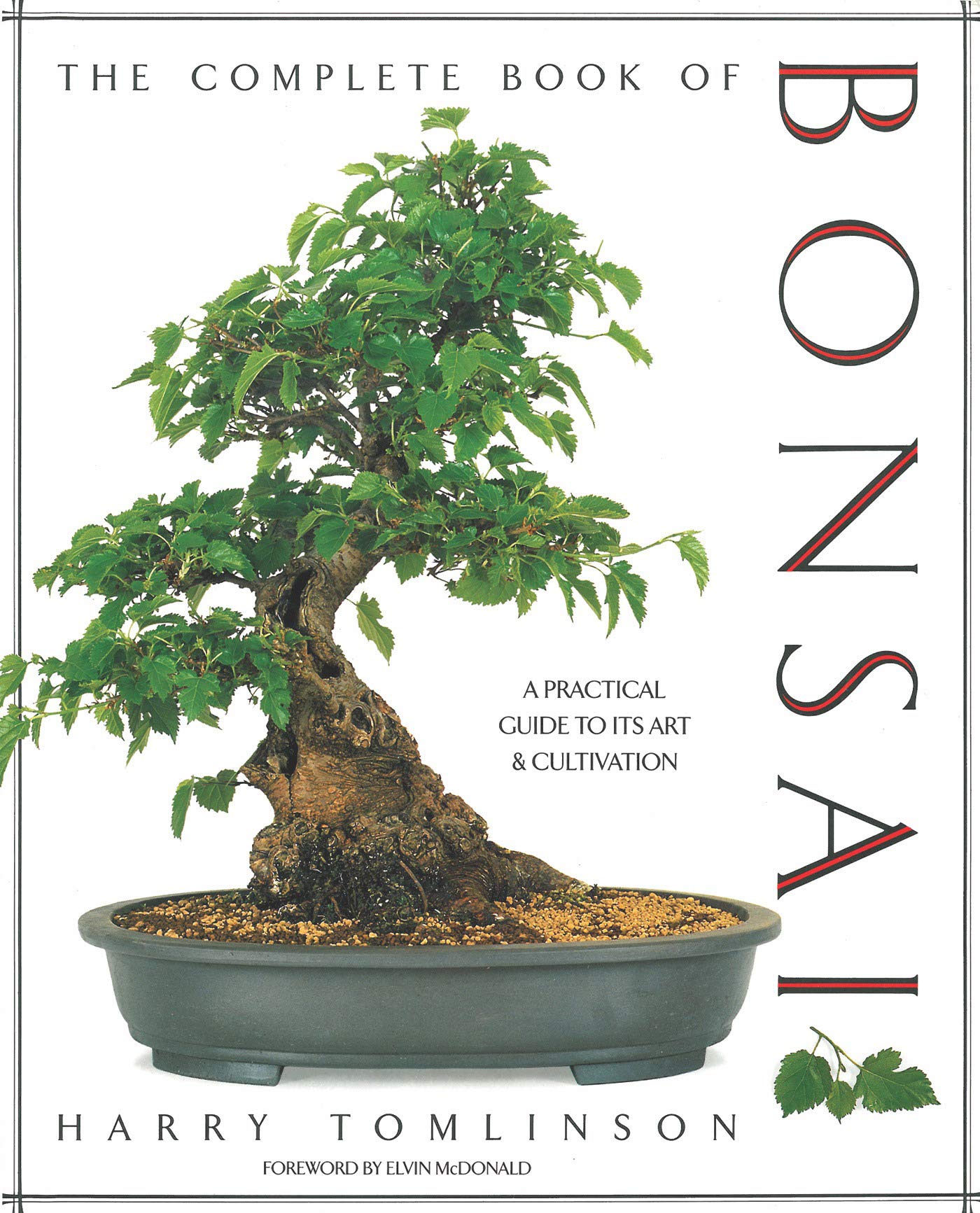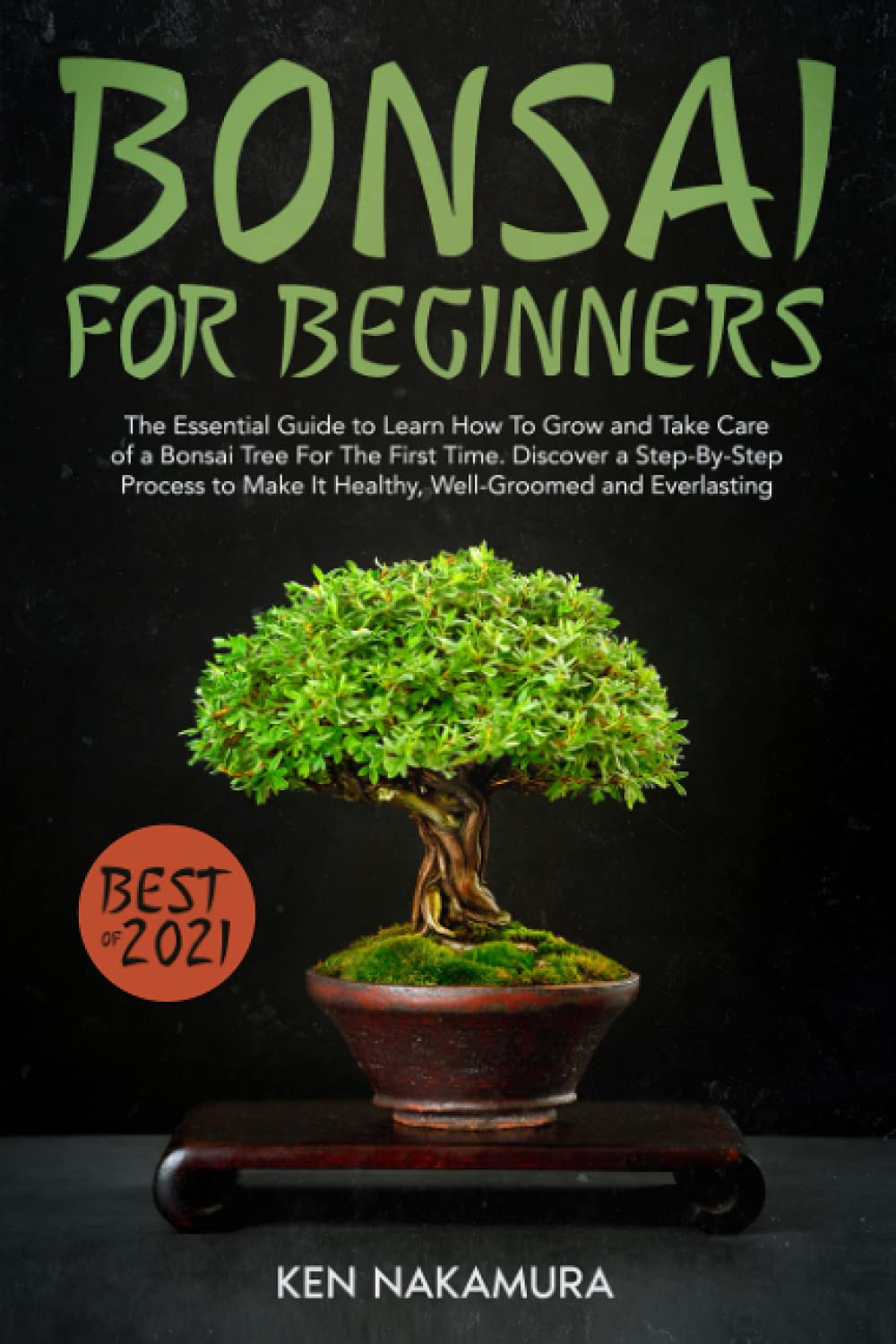
Welcome to growabonsai.com, a site build by enthusiats who fell in love with the beautiful art of bonsai. Here we’ll show you how to grow a bonsai tree and help you with the whole process.
If you’re interested in knowing more about this beautiful miniature gardening technique, you just came to the right place!
Let us start by saying that to grow a bonsai it’s not only about gardening. It also has a therapeutic value, plus enables patience and fortitude and it’s a great activity for relaxing purposes. A bonsai can be with you until the end of your days. In fact, ancient Japanese believed that those who could take care of a miniature tree for a long time got eternity granted for their soul. For them a tree could be the connection between the holy and the human, between heaven and earth.
The first records of people growing bonsais are located in China. However, the Japanese are responsible for developing and improving the art as we know it today. Contrary to what most people believe, bonsais are not genetically dwarfed plants, they are kept small by a series of techniques and steps that, if done properly, would allow the tree to live as long as their original specie. Most trees can be grown as bonsais. However, you have to think about a few details before starting.
Before you start
Before asking yourself how to grow a bonsai, you should consider which specie you would like to plant and also the conditions of your home, surrounding environment and climate. There are a few options that could be good for starters, such as the Baby Jade and the Hawaiian Umbrella. Keep also in mind that almost any tree can become a bonsai, but details like leave size should be thought about. A lot of people prefer trees with small leaves, because are easier to model.
There’s also another consideration you should make when planning to plant a bonsai: There are many ways to do it. You could star from zero, which means buying seeds from a shop or picking them up near the trees around your home, or in the wild. You could also buy a young plant, called a “prebonsai”, which consist of a germinated tree in early stage. That way the whole process becomes faster, even though remember: To grow a bonsai is also an exercise of patience. The last option may be the easiest but also the least educational: that is to buy a full grown bonsai. In that case you would only have to do caring activities. It’s important to know: There are no “bonsai seeds”. If someone offers you such a product he’s either lying or don’t know much about bonsai. The seed which a bonsai comes from is just a regular tree seed, the process of making a bonsai comes later, after it is germinated.

Bonsais are divided by its size: from the smaller ones, called Keshitsubo, to some of the bigger ones called Hachi-uye. There are also different styles of bonsais: formal and informal upright, slant, cascade, shari, forest, raft, and many more.
The cheapest and nicest ways to grow a bonsai tree
Plant a bonsai from seed is a slow and hard working process but is also the most rewarding way to do it. It may take years and you may fail at first, but as long as you keep trying and feel passionate about it you’ll be amazed by the results.
If you’re a starter then you’ll probably don’t want to wait that long for results. What most people recommend is to buy a prebonsai, or find one in a forest near your home (remember that a prebonsai is nothing more than a tree in its early stages). In case you decide the second option there are many considerations. You need permission from the landowner to do it. Also you have to be very careful on not damaging the roots when digging. There is also a specific time of the year to do it: the first weeks of spring.
When you grow a bonsai from seed you should do the planting on autumn, so they start germinating in spring. It’s always better to select trees that can adapt easily to the climate of the place you live; that way it’ll work in our favor.
Pruning and wiring

Pruning is one of the ways to create and shape a bonsai. It’s very important not to try to change too much the original silhouette of the tree. Pruning must be constant (it’s necessary not only to shape but as part of the caring process) and you should have regular spots for it on the tree, to achieve a beautiful and nice bonsai with strong and numerous leaves.
On the other hand, wiring has also been a useful option to grow a bonsai. Shaping angles, generating branches, all this can be done by wiring. However it’s very important to do it the right way, because it can be a disaster if not done properly, and can even kill your bonsai tree.
There are more techniques that can be applied when you grow a bonsai. You can defoliate the tree to obtain smaller leaves, or to balance it shape. There’s also a well known technique called Jin & Shari which consist in making a bonsai look old and mature by creating areas of deadwood on the tree, just like happens in nature sometimes.
We have a section dedicated only to bonsai training.
Bonsai caring
Keeping strong and healthy your miniature tree is all about good care. If you decide to plant a bonsai this is the last step of the way and, if you do it right, the most rewarding one. It’s also the longest procedure because it could last most of your life and even after, if you decide to leave it to your descendants. In Japan, families inherit bonsais from one generation to another.
As we said before, there are many types of bonsais as there are trees species, so the way you take care of them may differ from one to another. For the watering process, you should constantly check the soil of the bonsai and keep it damp and when it gets slightly dry then water it again. It’s very important not to flood it.

Find a nice place for your bonsai. Some miniature trees need at least some direct sunlight on them, others not too much. Check the humidity and temperature of the room where you’re planning to put your bonsai and be aware of the needs of the tree of your choice.
When you grow a bonsai, there’ll be a point when you’ll have to think about taking it from an old pot to a new one, it’s called repot. Different species of trees means different repot periods, from 2 to 5 years.
Fertilization is also a convenient topic to know. There are many bonsai friendly fertilizers but you can use regular ones as well, but be very careful not to use too much though. Most commercial brands have instructions on how to use them.
Remember to always check for uninvited guest on your bonsai. Your miniature tree is no different from the original one when it comes to fungus, pests or diseases.
We have a section which focus on bonsai caring.
Start to grow a bonsai now
We’ve been talking about how to grow a bonsai for a while now. So, if you still here that means you’re interested in knowing more about it. I’m going to recommend you what to do with the information we just gave you and how to learn more and become a pro.
You cannot start to grow a bonsai only with what’s written on this page, that’s for sure. You need to dig deeper. You can search on the Internet, however this might be a double-edged sword. There’s way too much information around. Some of it may be useful but there’s a lot of BS. That’s why we always recommend to buy a book on the subject.
If you’re thinking about buying a bonsai, you can visit our store here. We have all types of bonsai, kits for starters and we also recommend the best tree species for begginers. Take a tour on our online store.
Books about bonsai
After a lot of research, we recommend three books on bonsai. All of them have plenty of step by step and specific information on how to grow a bonsai. They also have plenty of graphics and were made by experienced miniature gardeners.
The best book we know on bonsai is The Bonsai Book by Dan Barton, which we named a few lines ago. This is one of the most famous works on the subject and without a doubt the most complete. Everything you need to know is there, and when we say everything we really mean it. You can read our review about The Bonsai Book by Dan Barton here or buy it directly on Amazon by clicking on the image. This is the only book about bonsai on Amazon.com which all reviews give the top qualification of five stars, so our opinion that this is an amazing work is shared by many.
The Complete Book of Bonsai by Harry Tomlinson it’s our second recommendation. It is as complete as The Bonsai Book and also very well explained. It has amazing graphic material with plenty of beautiful pictures and images. The Complete Book of Bonsai will provide you with all the info you need to know on bonsai, from its principles, evolution and origins to its styles, techniques and species. Everything you need to know about growing bonsai is there. You can read our review on The Complete Book of Bonsai by Harry Tomlinson here or buy it directly on Amazon by clicking on the image.
Bonsai for Beginners by Ken Nakamura is another of our all time favourites. A great book for those who want to try out their bonsai gardening skills and improve. This essential grower’s guide explores the history and origins of bonsai trees, as well as how modern information and growing techniques have made bonsai trees an easy and accessible hobby for everyone to enjoy. With step-by-step instructions and plenty of beginner advice, you’ll learn how you can grow your first bonsai tree, create the perfect environment for it to flourish, trim it into stunning shapes, and so much more. You can buy it directly on Amazon by clicking on the image.
On the right column of this site you can find more reviews on bonsai books and products.


